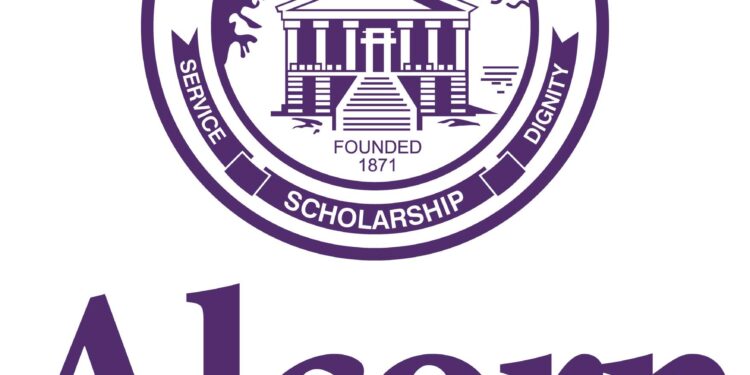In a bold step toward enhancing science, technology, engineering, and mathematics education, Alcorn State University has secured a significant grant aimed at integrating virtual reality (VR) technology into its STEM programs. This innovative initiative promises to transform traditional learning environments, offering students immersive and interactive experiences that could redefine the way complex concepts are taught. Highlighted by WJTV, the funding not only underscores the growing importance of cutting-edge technology in education but also reinforces Alcorn State’s commitment to preparing the next generation of scientists and engineers for a rapidly evolving world.
Alcorn State Secures Funding to Enhance STEM Education Through Virtual Reality
With the recent grant award, Alcorn State is set to revolutionize its STEM curriculum by integrating cutting-edge virtual reality (VR) technology into classrooms. This initiative aims to provide students with immersive learning experiences, enabling them to explore complex scientific concepts in a 3D environment. By leveraging VR, educators plan to foster greater engagement, enhance understanding of abstract subjects, and prepare students for the demands of tomorrow’s tech-driven world.
Key features of the program include:
- Interactive VR Labs: Hands-on simulations for biology, physics, and engineering courses
- Teacher Training Workshops: Equipping faculty with the skills to seamlessly integrate VR tools into lessons
- Collaborative Virtual Spaces: Enabling students to work together on projects regardless of physical location
| Grant Details | Funding Amount | Duration |
|---|---|---|
| STEM VR Enhancement Program | $1.2 Million | 3 Years |
Integrating VR Technology to Foster Student Engagement and Hands-On Learning
By incorporating virtual reality into the STEM curriculum, Alcorn State is transforming traditional learning into an immersive experience that captivates students’ curiosity and enhances their understanding. VR simulations allow learners to explore complex scientific phenomena and engineering processes firsthand, breaking down abstract concepts into tangible interactions. This dynamic approach not only sparks greater enthusiasm but also promotes critical thinking and problem-solving skills as students navigate virtual labs and environments designed to mimic real-world challenges.
Key benefits of utilizing VR for hands-on education include:
- Enhanced retention through experiential learning
- Safe experimentation with hazardous materials or scenarios
- Increased accessibility for remote or underserved students
- Collaborative opportunities using multi-user virtual spaces
| VR Module | STEM Focus | Learning Outcome |
|---|---|---|
| Virtual Chemistry Lab | Chemistry | Safe molecule experimentation |
| 3D Physics Simulations | Physics | Understanding forces and motion |
| Engineering Design Studio | Engineering | Prototype building and testing |
| Environmental Expeditions | Earth Science | Interactive ecosystem exploration |
Strategic Recommendations for Implementing VR Tools in Higher Education STEM Programs
To maximize the impact of VR technology in STEM education, institutions should prioritize curriculum integration that bridges theory and immersive practice. Rather than using VR as a standalone tool, embedding it within lab simulations, data visualization, and collaborative problem-solving activities can spark deeper understanding and retention. Faculty training is equally crucial-empowering instructors with both technical know-how and pedagogical strategies ensures VR enhances, rather than distracts from, learning objectives. Consider establishing interdisciplinary teams to curate content that aligns with course goals while exploring innovative ways to engage diverse learning styles.
- Pilot Programs: Start with small-scale VR modules to gauge student interaction and refine approaches.
- Infrastructure Assessment: Ensure robust hardware, software, and network support to avoid technical disruptions.
- Continuous Feedback: Implement regular student and faculty surveys to adapt content and delivery.
- Accessibility: Design VR experiences that accommodate all students, including those with disabilities.
| Key Aspect | Recommended Action |
|---|---|
| Content Design | Interactive 3D models + real-time data integration |
| Faculty Development | Workshops + peer mentoring |
| Student Engagement | Gamified challenges + collaborative projects |
| Technical Support | Dedicated helpdesk + maintenance schedules |
Building a sustainable VR ecosystem requires strategic partnerships with technology providers and continuous evaluation metrics. Tracking progress through measurable outcomes such as competency gains and student satisfaction reveals the tangible benefits VR brings to STEM education. By fostering an experimental yet structured environment, institutions can evolve VR tools from novel gadgets into foundational pillars that elevate academic achievement and inspire the next generation of innovators.
Closing Remarks
As Alcorn State embarks on this exciting journey to enhance STEM education through cutting-edge VR technology, the possibilities for students and educators alike continue to expand. With the support of this significant grant, the university is not only embracing innovation but also paving the way for a future where immersive learning transforms classrooms into dynamic hubs of discovery. As this initiative unfolds, it will be inspiring to watch how virtual reality reshapes the educational landscape, empowering the next generation of scientists, engineers, and innovators.































